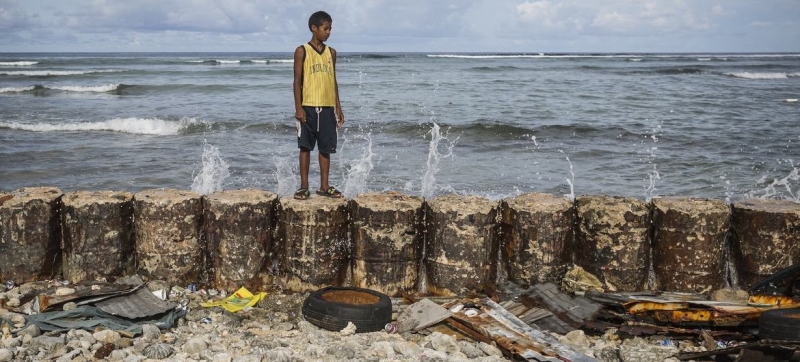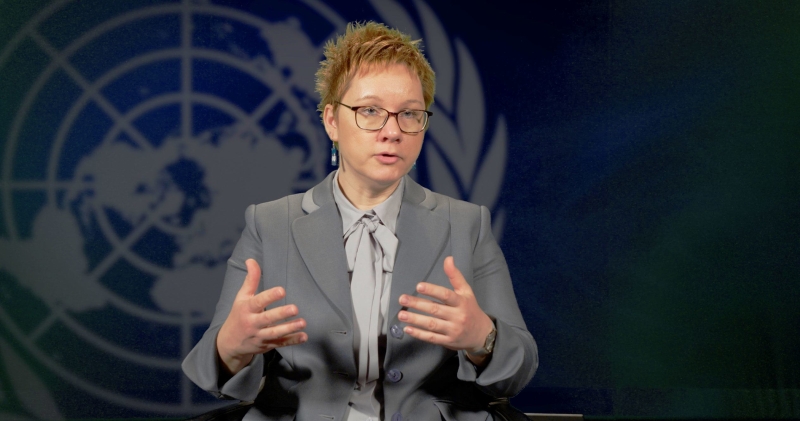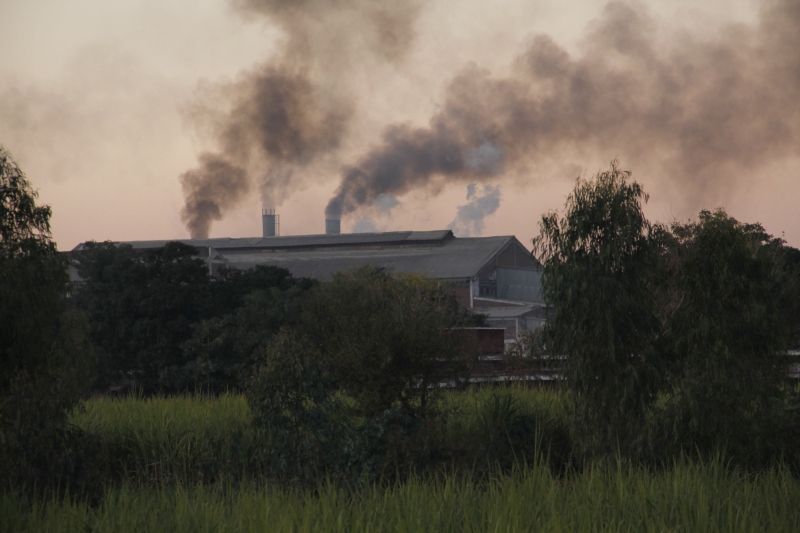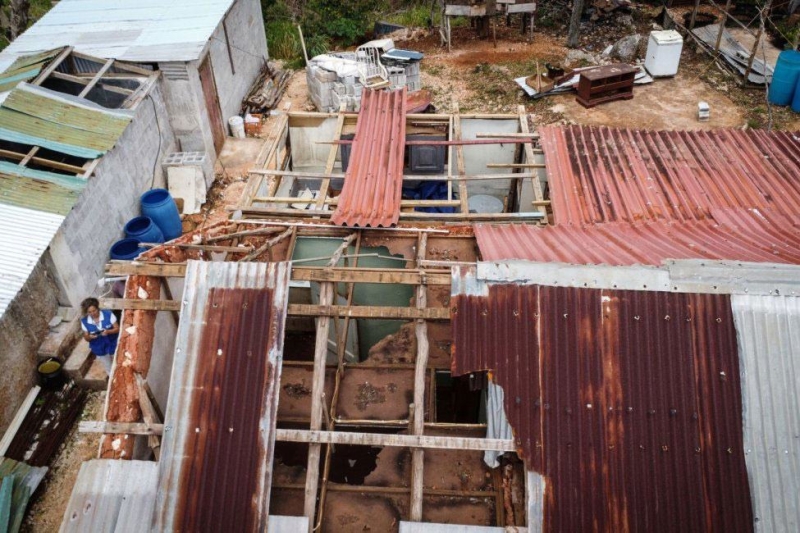
The Marshall Islands may be underwater due to rising sea levels. What’s important to know about climate change: WMO expert on alarming trends, misinformation and the need for joint action Climate and Environment
The threshold of one and a half degrees of warming will be exceeded over the next decade, which means more natural disasters and the danger of permanently upsetting the balance of the planet. Ahead of the Climate Conference (COP 30) in November in Belém, Brazil, UN News Service’s Evgenia Klescheva spoke with World Meteorological Organization (WMO) Senior Scientist Oksana Tarasova about global risks and how to respond to climate skeptics.
The main cause for alarm, which UN Secretary-General António Guterres spoke about at the recent WMO Congress, among other things, is the exceeding of the global warming threshold established by the Paris Agreement by 1.5 degrees Celsius compared to the pre-industrial era.
“The threshold of one and a half degrees will be exceeded over the next decade. Naturally, climate action is needed to avoid a long-term increase in temperature,” Tarasova emphasized.
Adaptation or reduction of emissions
The Paris climate agreement target can still be achieved despite the short-term overshoot. But this can only happen if all parties take action to reduce emissions and remove CO₂ from the atmosphere, the expert noted.

Senior Researcher at the World Meteorological Organization (WMO) Oksana Tarasova.
“That being said, very significant changes in the frequency and intensity of extreme weather events are expected in the near term as we exceed one and a half degrees,” she warned.
That’s why early warning systems are especially important for everyone, and the role of weather services in preserving life and property will only increase.
“However, you need to understand: adapting to the future will be very difficult. Adaptation and emissions reduction must go in parallel. You cannot choose one direction or another,” noted the researcher.
Vicious circle
WMO scientists are recording record levels of greenhouse gases. Particularly alarming is the increase in CO₂ concentration.
“Carbon dioxide concentrations have begun to increase at a much faster rate than they did in the 1990s and 2000s. If we compare the increase in CO₂ in 2024, it is significantly higher than the average for the previous ten years,” noted Tarasova, who coordinates the publication of the WMO Greenhouse Gas Bulletin.

The concentration of carbon dioxide in the Earth’s atmosphere has reached new highs.
According to her, the planet is already losing the ability to “self-regulate”: “We see that the Earth system is approaching the points at which it passes from one state to another. The ability of forests and oceans to absorb harmful emissions is decreasing. If these points are reached, then those natural systems that currently absorb half of all emissions will stop doing so.”
This creates a vicious circle effect: the less Earth absorbs carbon, the faster climate change intensifies.“Once we cross a certain line, it’s very difficult to go back. For example, if the permafrost has melted, then even if we then lower the temperature, it will not be restored. “This is a process of formation of an ecological system that takes thousands of years,” explained the WMO specialist.
Misinformation and false disputes
Despite the obvious observational data, public debate continues about the nature of climate change. According to the expert, this is largely the result of misinformation and distortions in the media. At the same time, all information disseminated by the agency goes through a clear scientific process, international discussion, and publication in cited journals. climate change, which includes 10 thousand specialists – this is a matter of ethics, not logic,” Tarasova said bluntly. inactivity
The WMO official stressed that there is no real scientific disagreement: “Polls have been done, and in fact there are a lot of publications that show that what the public sees as a lack of consensus is in fact completely incorrect. There is one skeptic for every ten thousand scientists who say that climate change is happening and it is caused by human activity. It’s just that our media operates under the logic that consensus is not interesting.” everything is ambiguous.”
“Climate is this is not faith, it is measurements”
Tarasova recalled how at a recent press conference a journalist asked what to do with those who “don’t believe” in climate change—the number of which is increasing along the same trajectory as the concentration of carbon dioxide in the atmosphere.
“I answered with a smile: who told you that climate change is a religion? They believe in religions. And climate measurements are a science. Any skeptic looks at his thermometer every morning before getting dressed and going outside. Doesn’t he trust his thermometer? And climate measurements are many thermometers that measure everything according to a certain standard,” says the scientist.

Destruction after Hurricane Beryl in Jamaica.
She also explained the key difference between current climate change and the natural fluctuations that have occurred throughout the Earth’s geological history: “Yes, climate change has occurred. Yes, we saw 400 parts per billion of carbon dioxide in the atmosphere. And 5 million years ago, when dinosaurs were running around, in the Jurassic period, the temperature was 2-3 degrees warmer, the sea level was 10-20 meters higher than now. Yes, we have seen glacial transitions, ice ages, interglacial periods.”
According to Tarasova, there is one “small difference.” During the transition from interglacial to glacial and back, changes in the concentration of carbon dioxide in the atmosphere were approximately the same level as between the beginning of the industrial revolution and modern indicators. However, changes from the glacial to the interglacial periods took place over 10-15 thousand years, and less than 200 years have passed since the industrial revolution. expert.
“Every molecule of CO2, methane or nitrous oxide that flies is a small heater. It flies away from the Earth, accordingly, it absorbs everything and then re-radiates it. The physics is very simple. The more molecules, the more can be absorbed and re-emitted,” she added. that China is developing alternative energy, Europeans are introducing laws to regulate emissions. But climate problems are not solved locally. Greenhouse gases mix in the global atmosphere and accumulate,” Tarasova said.
“One country or one block of countries, unfortunately, will not be able to solve global problems. What is needed here is joint global action,” she concluded.
